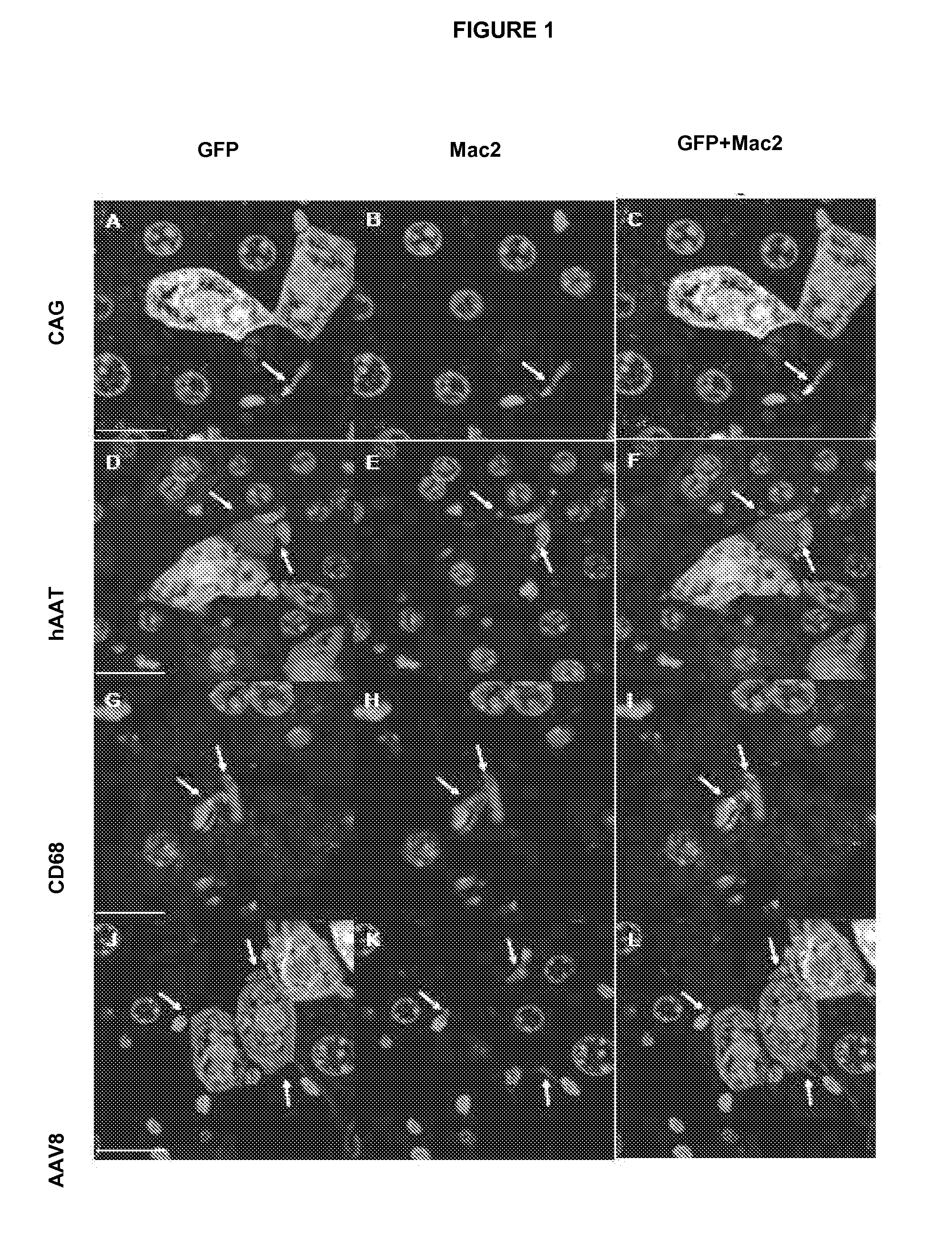Gene therapy compositions for preventing and/or treating of autoimmune diseases
a technology for autoimmune diseases and gene therapy, applied in the field of gene therapy compositions, can solve the problems of serious danger, a very significant obstacle to achieving a close glycemic control, and the death of hypoglycemia in some animals
- Summary
- Abstract
- Description
- Claims
- Application Information
AI Technical Summary
Benefits of technology
Problems solved by technology
Method used
Image
Examples
example 1
Transgenic Mice
[0054]Transgenic CD1 mice (N10 generation) that express human interferon beta (IFN-β) in β cells were used. All the experiments were performed in male transgenic mice. The transgenic mice were administered an intraperitoneal injection of STZ (25 mg / kg body weight), dissolved in 0.1 mol / l citrate buffer (pH 4.5) immediately prior to the administration, on 5 consecutive days. The mice were fed with a conventional diet ad limitum and kept in a 12-h light-darkness cycle (the lights were turned on at 8:00 am). The animal care and experimentation processes were approved by the Ethics Committee on Animal and Human Experimentation of the Universitat Autònoma of Barcelona.
example 2
Immunohistochemistry and Histopathology
[0055]The tissues were fixed for 12-24 h in formalin, imbibed in paraffin and sectioned. For the immunohistochemical detection, the sections were incubated at 4° C. overnight with specific antibodies for each protein, washed with PBS 3×5 min and incubated with the corresponding secondary antibodies. For the detection of fluorescence, the sections were incubated with fluorochrome-conjugated secondary antibody for 1 h at room temperature and the nuclei were counterstained with Topro or Hoechst. The bright-field detections were developed using the ABC complex (Vector Laboratories, United Kingdom), which uses 3′3′-diaminobenzidine (DAB) as the chromogenic substrate. The sections were counterstained in hematoxylin from Mayer. For the immunohistochemical detection of insulin, glucagon, somatostatin and pancreatic polypeptide proteins, pancreas were fixed for 12-24 h in formalin, imbibed in paraffin and sectioned. The sections were subsequently incuba...
example 3
Morphometric Analysis and Determination of the B Cell Mass
[0057]Pancreas were obtained from transgenic mice and the immunohistochemical detection of insulin was performed in three sections (2-3 μm), separated by 200 μm. The surface area (in square micrometres) of each islet and the surface area of each section were determined using a Nikon Eclipse E800 microscope (Nikon, Tokyo, Japan) connected to a video camera with a colour monitor and an image analyser (analySIS 3.0; Soft Imaging System, Lakewood, Colo.). The percentage of β cell surface area in the pancreas was calculated by dividing the surface area of all the insulin-positive cells in a section by the total surface area of this section and multiplying the result by 100. The β cell mass was calculated by multiplying the weight of the pancreas by the percentage of β cell surface area.
[0058]The replication of β cells was measured by the immunohistochemical analysis of the Ki67 marker. Ki67 is expressed at low levels during the in...
PUM
| Property | Measurement | Unit |
|---|---|---|
| Biological properties | aaaaa | aaaaa |
Abstract
Description
Claims
Application Information
 Login to View More
Login to View More - R&D
- Intellectual Property
- Life Sciences
- Materials
- Tech Scout
- Unparalleled Data Quality
- Higher Quality Content
- 60% Fewer Hallucinations
Browse by: Latest US Patents, China's latest patents, Technical Efficacy Thesaurus, Application Domain, Technology Topic, Popular Technical Reports.
© 2025 PatSnap. All rights reserved.Legal|Privacy policy|Modern Slavery Act Transparency Statement|Sitemap|About US| Contact US: help@patsnap.com



